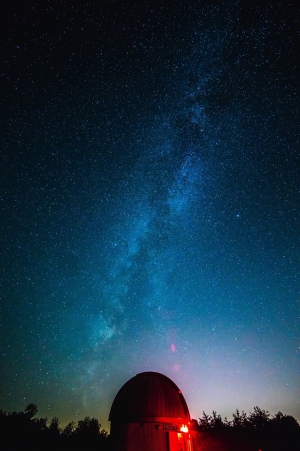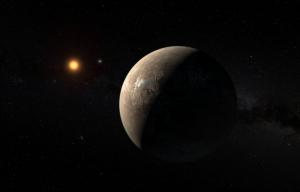
Summer Stargazing Nights
- Where:
- Frosty Drew Observatory
- When:
- Friday August 26, 2016 at 7:30 p.m.
- Cost:
- $1 Suggested Donation per Person
Tonight is Stargazing Night at Frosty Drew Observatory and the forecast is looking quite nice. We can expect partly cloudy conditions in the afternoon to clear just after sunset, making for mostly clear to clear skies overnight. This is quite fortunate for all us astro geeks because the 24% waning crescent Moon doesn’t rise until 1:26 a.m. leaving super dark skies for us to celebrate until the stunning crescent moonrise in the early morning. Certainly a night to be out!
We will open the Observatory, Sky Theatre, and Nature Center at 7:30 p.m. In the Observatory, sunset views of Saturn will be available. Once twilight starts waning telescopes will showcase fabulous nebulae and star clusters along the galactic plane. As darkness prevails, the huge Andromeda Galaxy, the largest galaxy in the Local Group, will rock one of our wide field telescopes. The Sky Theatre will feature celestial objects photographed at Frosty Drew with a commentary. In the Nature Center, Frosty Drew Naturalists will showcase the sunlit side of Frosty Drew until 10:00 p.m. We will keep the Observatory open until fatigue overtakes enthusiasm, no earlier than midnight, and we’ll post a closing up message to our Twitter (@FrostyDrewOBSY) and Facebook when we decide to start closing up.
Overall, tonight is the night to be out! We have had much variability in the forecast this summer with our regular on site weather being less than optimal. Tonight sets us up for fabulous dark skies with no Moon until the morning hours. These are the nights when the Milky Way shines brightly and we celebrate all the amazing celestial happenings in the galaxy. So put a bit of awesome on your Friday night agenda and stop in at Frosty Drew for a moment with the Milky Way.
-------------------------------------------------------------------------
Weekly Happenings
Scott MacNeill
Last week we mentioned a rumor that’s been circling the astro science communities, stating the existence of an Earth-like planet orbiting Proxima Centauri, the closest star to the Solar System. Well Wednesday, August 24th took that rumor and made it the real deal when the European Southern Observatory (ESO) announced that the Pale Red Dot campaign, using ESO telescopes, has in fact discovered a planet in the habitable zone around Proxima Centauri. Named Proxima b, the newly discovered planet is 1.3x the mass of Earth, orbits Proxima Centauri at a mere 5% the distance that Earth obits the Sun, and completes one full orbital period in 11 Earth-days. The planet resides in the habitable zone, where liquid water can exist on the planet’s surface. Though an amazing discovery, Proxima b is not quite the Earth twin we may want it to be. Read about the newly discovered planet, and get excited for all the awesome tech that this discovery will boost.
Tomorrow evening (Saturday, August 27th), a fabulous planetary dance is happening over our western horizon when Jupiter and Venus visibly pass within 0.07º each other (4 arc minutes). This will be a fabulous conjunction for anybody with a good view of the western horizon. The conjunction will be so close that both Jupiter and Venus will appear to nearly merge into one bright starlight object. To see the stunning celestial dace you will need a clear view of the western horizon. The conjunction will be visible shortly after sunset about 3º above the horizon. In Rhode Island all you need is a beach with a good western view. Viewing the conjunction with a small telescope or binoculars will offer up beautiful views of the Galilean Moons of Jupiter as well as Venus 93% gibbous phase. If anybody catches a photo of the conjunction, post it on our Facebook and we’ll share it on our time line. Happy viewing!
-Scott


